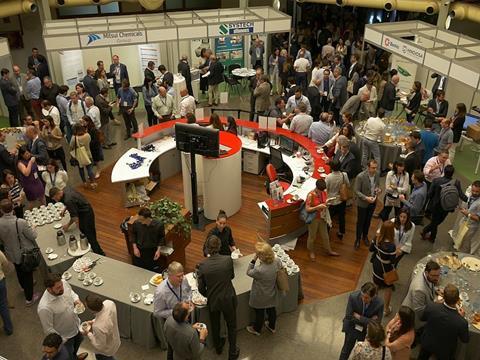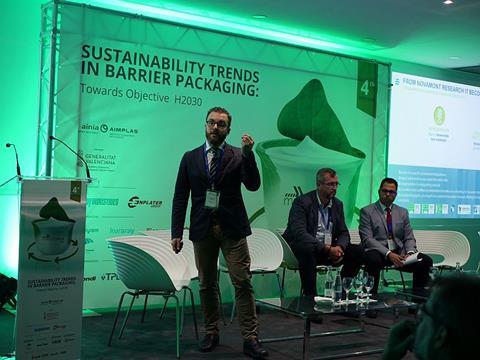
The fourth edition of MeetingPack in Valencia, organised by AIMPLAS and AINIA, was a meeting point for more than 350 professionals of the food barrier packaging industry. This year's event took place under the slogan ‘Sustainability trends in barrier packaging: towards Objective H2030’.
This article will outline only some of the innovations presented at the event. Watch this space for more in-depth coverage of some of the technologies showcased!
The sustainability of packaging and especially single-use packaging is a matter of concern. In order to address this, European legislation is being developed to promote more eco-friendly packages. MeetingPack offered an opportunity to see what the industry has been working on, and what is in the pipeline.
MeetingPack 2019 was an opportunity for companies to show their developments to the industry and society in their talks and in a dedicated area to showcase their most innovative products.
For example, attendees were able to explore the latest innovations in packaging of Danone Spain. One of them was the Lanjarón 1.25 litres bottle that is 100% rPET and 100% recyclable.
Knauf Industries showcased its latest innovations in expanded polystyrene (EPS) and expanded polypropylene (EPP). They introduced two sustainable alternatives that are gaining ground in the food-contact plastic packaging value chain due to their high performance and recyclability. In this respect, innovations like compartment systems with EPP modular partitions that make it possible to have two different temperatures in one packaging. Thus, one box can contain fresh food (at 2 ºC) and frozen food (a -18 ºC) at the same time. Thanks to this, cold packaging can be easily distributed optimising both economic and environmental costs and making distribution more flexible.
Enplater Group introduced its developments in more eco-friendly films, sheets and trays.
Comexi discussed the challenge of sustainability through the developments of products that combine taking care of the environment and aesthetics. They exhibited packages with visual effects such as transparent windows and paper touch effects as a sustainable alternative to attract consumers.
Cadel Deinking talked about the use of recycled material as a replacement for virgin resins and presented their bags for automatic packaging, which are 50% made of deinked recycled plastic. In this way, the company offers an added value to post-consumer materials.
Furthermore, SPGroup talked about PE HB ECO packages made of recyclable material with a polyethylene-based structure and high barrier properties. They are remarkable due to their capacity to withstand thermal treatments such as pasteurisation, hot filling and microwaves. It is also characterised by their high transparency, and are suitable for a wide range of foodstuffs.
Klöckner Pentaplast introduced a rPET recyclable tray made of at least 95% of recycled material, which reduces the carbon footprint and obtains, with minimum weight, maximum resistance.

In the MeetingPack exhibition area, we were also able to witness the first oxygen-barrier PVOH coating to be applied in the printing and lamination process of flexible structures, shown by Artibal, which has been developed within the COAT4PACK project in conjunction with ITC and Plásticos Romero. These new packages replace co-extruded EVOH structures. In particular, it has been achieved to reduce both the manufacturing process and the thickness of the multilayer barrier structure. For that purpose, oxygen barrier coatings have been developed to be applied by means of printing technologies that allow the lightening of the structures of food packages in comparison with the multilayer EVOH structures.
Lastly, AIMPLAS and AINIA introduced two projects in which they are participating. The NIASAFE project, focused on analysing, monitoring and minimising the migration of Non-Intentionally Added Substances (NIAS) to food-contact packaging. The REFUCOAT project, which is focused on developing new materials to package food in a more sustainable way. Within this project, barrier coatings are being developed, as well as bioplastics to be used in films and trays as an alternative to the current aluminium-based structures.

















